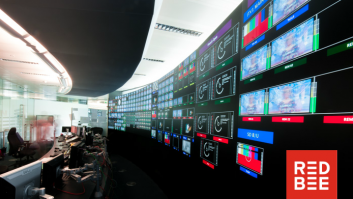Disaster recovery (DR) services have long been a key part of the industry. With climate change and the associated shift in weather patterns, and particularly the growth in extreme weather events, never have they been such a priority as now. DR is a growing issue for broadcasters and we are currently seeing increased interest and momentum in the market.
In addition to the changing climate, the ever-growing value of content in general, sports rights in particular, means that breaks in service bring even greater potential lost revenue. The battle for viewers, and therefore ROI, continually intensifies; protecting that experience and those revenues is vital.
Equipment vendors, security auditors, consultants, insurance companies and outsourced managed service providers, such as Globecast, are all playing key roles.
What do we mean by disaster recovery?
Disasters can strike at any time and in many forms, leaving facilities with severe damage and stripping broadcast data centres of power for days. Though this can have catastrophic results, many broadcasters — through no fault of their own — don’t have plans (or have a limited plan) about how to truly protect content/playout; most of their time and money is spent creating, managing and delivering that content.
One of the key drivers behind the increased interest in, and deployment of, DR services is the rising cost of business interruption insurance. In order to be insured, or to lower the cost of insurance, broadcasters and platform providers have to show that they have reduced their exposure to potential failure as much as possible. This can be done by investing in an appropriate DR service and there’s a range of DR service levels available.
Basic level
At the most basic level, this involves a single server with a loop of “evergreen” content. This simple solution is meant to protect a channel from going dark but cannot match the programme guide or provide for scheduled interstitial materials (advertising and promos). This solution can scale up into servers with more frequently refreshed content, which can be managed by either the provider (such as Globecast) or the customer.
Fully managed DR
At the opposite end of the spectrum, a fully outsourced and managed mirror of the primary master control operation can be developed where the programme and interstitial elements, playlists, metadata and other required components are identical to the primary playout and operate in a mirrored environment, keeping customer services running across all eventualities. In addition to full disaster recovery, this also allows the customer to switch between the two sites, as needed, to ensure they are providing the same level of service. In many cases, such designs are also used to accommodate upgrades and maintenance work at one of the facilities. The “mirror” design can be built using technical solutions/features from alternate vendors. This reduces the cyberattack exposure in the case where the main site is compromised by hackers finding vulnerabilities in one vendor’s solution.
Cloud-based DR services
The broadcast market is inherently quite traditional and adoption of the cloud is gradual. For smaller customers, or thematic/niche channel DR, using cloud-based playout services can be ideal. Because the cloud is elastic by design, customers only pay the majority of their costs if there’s a disaster, with capacity able to be scaled up or down instantly. Of course, there’s always a service subscription cost, but this is fundamentally an Opex not Capex model, similar to cloud pop-up channel capabilities.
As media companies move towards a cloud and virtualised playout environment, facility-based backups will take on a different form. This is why it’s important for customers to find a technology partner that can provide primary and disaster recovery services in a virtualised environment, allowing for geographic diversity for management and monitoring of services. Virtualised technology helps broadcasters and cloud DR service providers to interoperate at the virtual machines (VMs) level. This interoperability means moving VMs across virtual infrastructure, sites and providers is much easier, quicker and more cost-effective.
Transmission protection
The next step, following the choice of playout disaster recovery, is transmission protection. In some cases, the output of the disaster recovery facility can be sent via fibre or IP to the primary uplink platform or directly to distributors, but often a separate protected distribution path is part of the overall disaster recovery design. Another field of delivery protection is the use of an alternate satellite uplink facility (DR teleport).
Globecast, as a managed service provider, is operating primary playout and headend services for broadcasters. Through its global presence with Media Centers around the world, all cyber secured and all interconnected via our fully meshed global backbone network, we offer a full range of DR solutions.
These are essential to avoid major direct and hidden damages: affiliate financial compensation, loss of subscribers, loss of advertising revenues, brand damage, legal penalties…
As a service provider with more than 20 years’ experience in the media services supply market, disaster recovery is a key part of our portfolio. This, of course, sits alongside our expertise in the application of conditional access technologies for linear pay-TV content protection.







